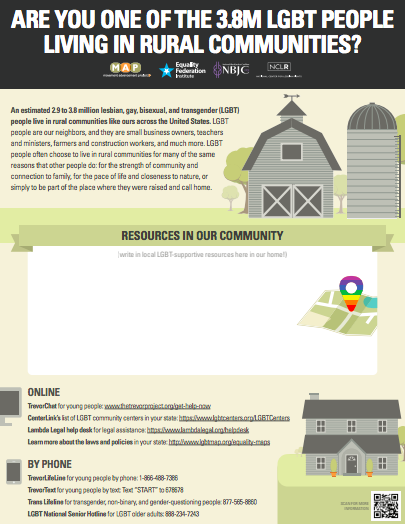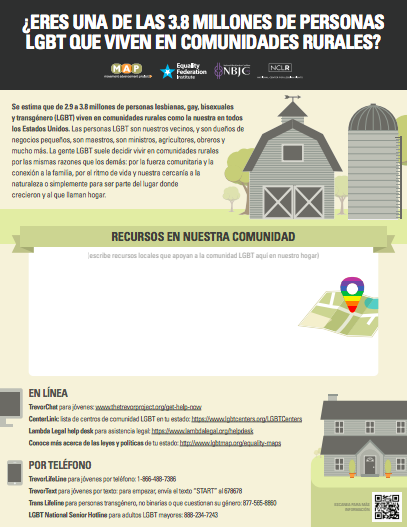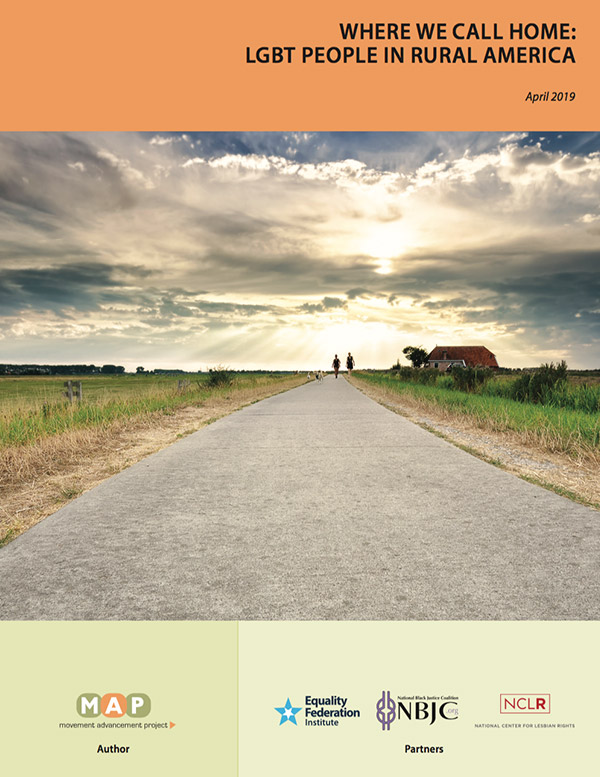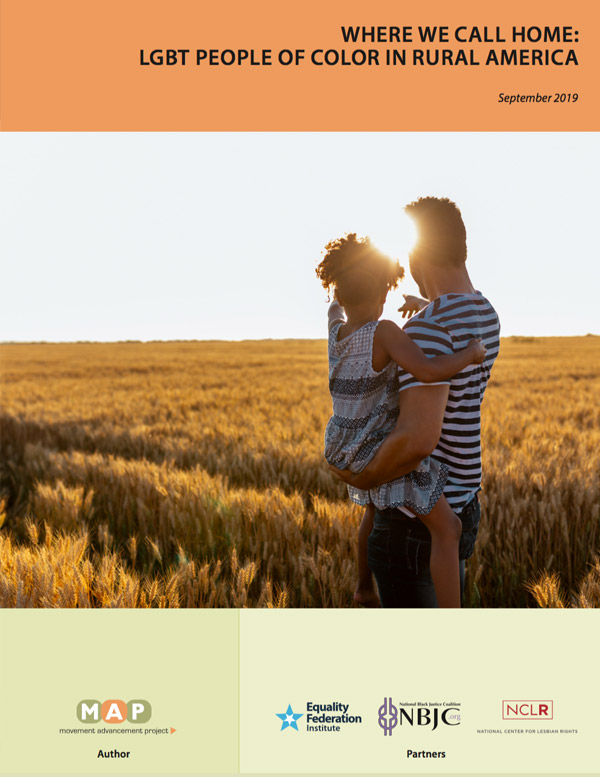
This community flyer is designed to allow communities to highlight LGBT resources in their own communities and to connect LGBT people in rural communities with existing local, state, and national organizations.

Este folleto comunitario está diseñado para permitir a las comunidades resaltar los recursos LGBT en sus propias comunidades y conectar a las personas LGBT en comunidades rurales con organizaciones locales, estatales y nacionales existentes.

Where We Call Home: LGBT People in Rural America examines the structural differences in rural life and their unique impact on LGBT people in rural areas, who are both more vulnerable to discrimination and less able to respond to its harmful effects.

Where We Call Home: LGBT People of Color in Rural America examines the unique challenges of LGBT people of color in rural America and highlights distinct experiences across different communities of color.





